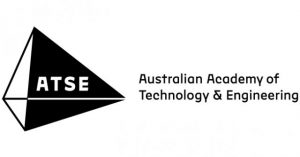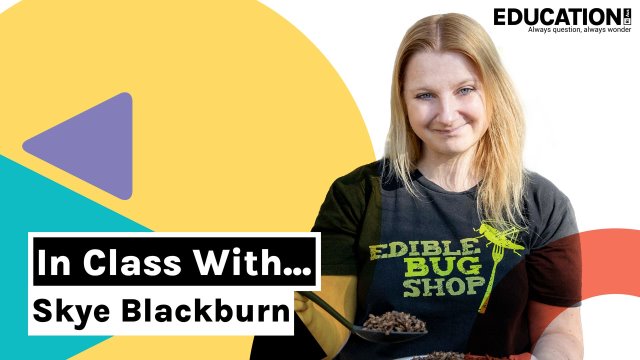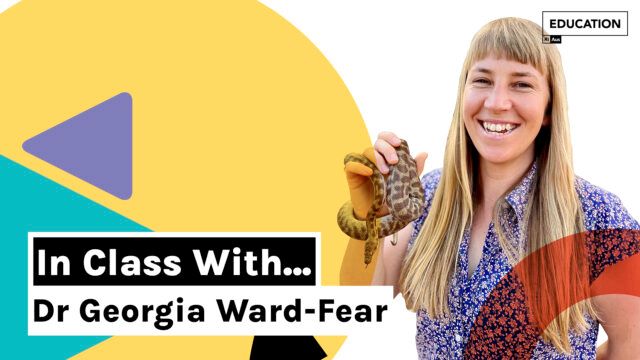The theme of this year’s National Reconciliation Week – which runs from 27 May to 3 June, with events around the country – is “Be Brave. Make Change.” That brings with it an opportunity to explore the role that science, technology, engineering, and mathematics (STEM) plays in bringing about change.
We honour and value the scientific knowledge and contributions of First Australians as the First Scientists, the First Astronomers and the First STEM Educators for over 60,000 years. From their insight into the stars and weather patterns to their management of bushfires, we still benefit from their practices today and need to ensure that all our students are aware of this.
This article from ATSE is designed to provide inspiration and encouragement for teachers to integrate indigenous perspectives meaningfully. Corey’s journey into STEM encourages us all to be brave and make change. His ambition and determination have brought about change, creating opportunity for people to flourish in contemporary Australia.
Word Count: 1986
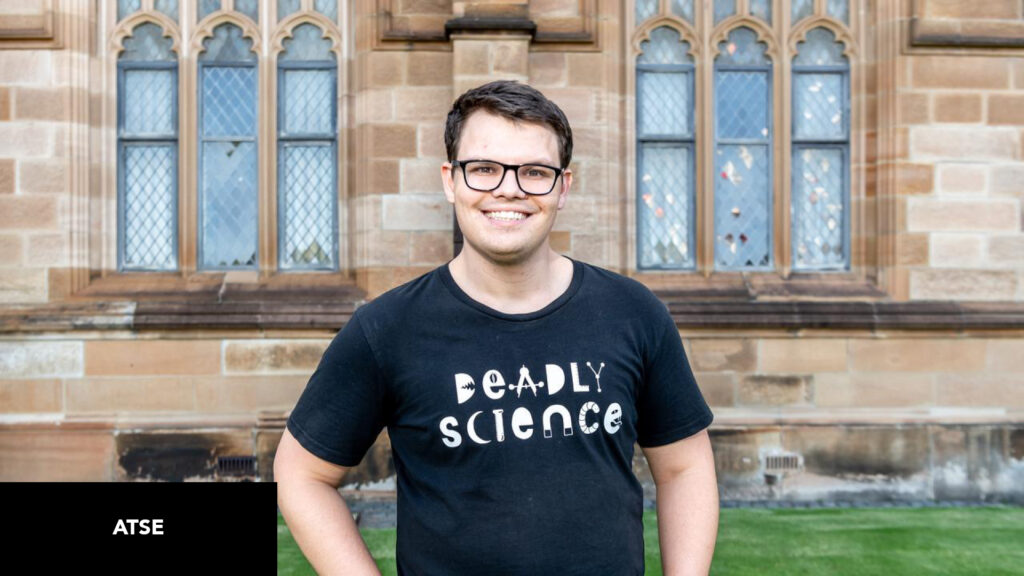
Corey Tutt is a mentor, scientist, proud Kamilaroi man and the 2020 NSW Young Australian of the Year. He’s also the founder of Deadly Science: an initiative that provides STEM books and resources to schools in remote Aboriginal communities.
Corey and the Deadly Science team received the 2021 Australian Museum Eureka STEM Inclusion Prize for their life-changing work. ATSE IMPACT magazine spoke to him about inspiration, education and how the science sector can do more to empower Indigenous Australians.
You’ve had a pretty adventurous STEM career. You’re the Ambassador for STEM/STEAM at the UNSW Faculty of Medicine and Health, but you’ve also been a reptile wrangler and alpaca shearer. Why does science matter to you?
Science brings us together. If you have a passion and something you don’t quite understand, and you want to know more, that’s science.
A great scientist is someone who cares. If you want to be a doctor who cures an ailment causing grief to thousands of people, that starts with empathy. Sometimes we can forget that.
Anyone can be a scientist. Unfortunately, I think STEM is a victim of the past, and we’re playing catch up now. Subconsciously – and consciously at times – we’re still telling Aboriginal and Torres Strait Islander kids that they can’t do science.
My mission is to change that.
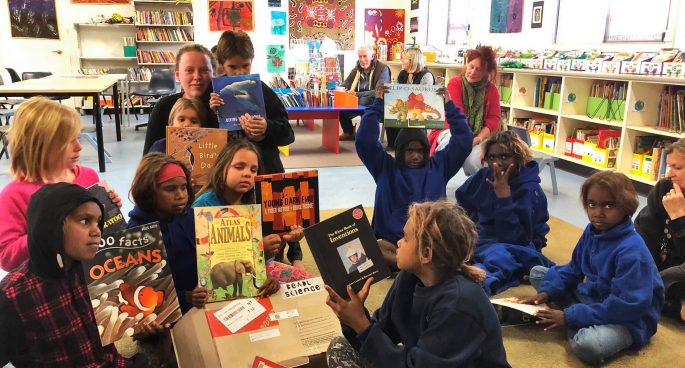
Thanks to you, over 20,000 books and resources have been shipped to remote schools, some of which don’t even have libraries. Can you tell us about your journey with Deadly Science?
I thought my passion was animals and people, but I quickly learnt that it’s getting kids into science.
It was pretty personal in the beginning. I worked two jobs to fund Deadly Science, including night shifts at a pet hotel. I started sending these books and it went further and further.
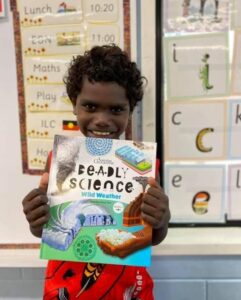
It got harder to do everything by myself, so I started a GoFundMe campaign and reached out to people for donations. That was tough because I’m a bit independent and felt shy asking for help.
Deadly Science has gone on to mentor and change their lives, which is ultimately what I wanted. I tell young people that it doesn’t matter what road do you take, because you’ll get there in the end.
Sometimes the best news I get all day is a letter from a kid in community telling me that she or he wants to be a scientist. Or a parent saying, “thank you so much for giving my kids this bit of joy.” Or a mum who’s suffered from domestic violence saying, “you’ve given me hope.”
Science gives us hope, and education gives us freedom.
Mentoring is something ATSE also advocates through our IMNIS program. How have you found mentoring, and how have your mentors influenced you?
I never thought that I would ever become a role model, I just wanted to make change. It’s tough because I’ve lived with trauma. I’m 29 years old, but I’ve seen a lot. I never thought that those experiences would lead me to become a mentor.
Being a good mentor is not about being perfect. There are some kids who I can’t be a mentor for. But I can get them a book and I can get them access to a STEM professional who can be their mentor. And that’s just deadly.
What drives you and where did you get your passion?
I always had passion for lizards and snakes, and other animals. I also had a number of very smart people in my Aboriginal family who have done a lot of good for the community. I’ve learned a lot off my Pop.
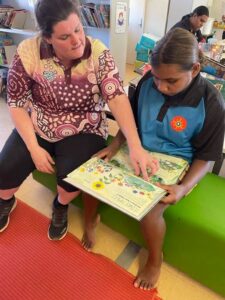
In my school life I learnt to never take no for an answer. People told me I couldn’t do things based on my race, upbringing, or what they conceived I was like, and I always pushed against that.
A careers advisor said that I couldn’t be a zookeeper because I wasn’t smart enough. The same person told my sister she should be a hairdresser: she’s never cut hair in her life. I’m her younger brother and I would not want her anywhere near my head!
I was pretty stubborn. I left school in Year 10 and went to Western Australia to work at a Wild Sanctuary, which was a crazy place.
There I learnt responsibility for the first time, as a 16-year-old. I had to get up at six in the morning and feed joeys. If I didn’t feed them, they died. Simple as that.
From then, to the professor who told me that Deadly Science was a bad idea, I’ve always just wanted to prove people wrong and overcome those systematic challenges that I’ve faced.
First Nations people were Australia’s first scientists, and the Budj Bim aquaculture system was recently heritage listed as a historic feat of engineering. How can we better embrace traditional knowledge today?
There’s a lot of beauty, wonder, love and pride in our culture and our languages. Budj Bim, which you mentioned, and the Brewarrina fish traps, are older than the pyramids.

People should respect these sites and go and see them. We come from a country whose first people invented bread, designed fish traps, and were forensic scientists right up until the 1990s. Even today some police forces still use bush trackers.
It’s time to stop calling our people only hunter gatherers and realise they were scientists: they studied and observed the land. We should be proud of that, as Australians.
To acknowledge the good, we also need to accept the bad things that happened. Descendants of settlers – and I’m in that boat too, because I’ve got white blood – need to acknowledge that our ancestors were responsible for heinous crimes against humanity.
To really take away those barriers of race, we have to have the difficult conversations. Sometimes the things we don’t want to hear are the beacons that lead us to change.
Dispossession and colonialism have meant that rates of poverty, disease and deaths in custody are still shamefully higher for First Nations people in this country.
What more do you think should be done to empower Aboriginal and Torres Strait Islander people?
We’ve got to start young. We’ve got to get our young kids thinking they’re capable of following their dreams, because they are.
We also need to empower old people as well and listen to them. Our old people are beacons of knowledge, and we need to treat them with respect.
What do you think the STEM sector needs to hear? What’s been your experience as a Kamilaroi man in the sciences, and how we do more to support diversity and inclusion?
The STEM industry needs to let Aboriginal people inside to lead Indigenous programs.
Aboriginal people have a connection to their families and culture, and experience of disadvantage, beyond what non-Indigenous people can understand.
The sector needs to empower Aboriginal and Torres Strait Islander people – people like Karlie Noon or Kirsten Banks – to lead the way.
At the same time, don’t burden them with too much work and pay them for their time. If you are doing work with Aboriginal people, you need to consult elders, but you need to pay them for their expertise in the same way you would pay any specialist to work on your project.
“Science gives us hope, and education gives us freedom”
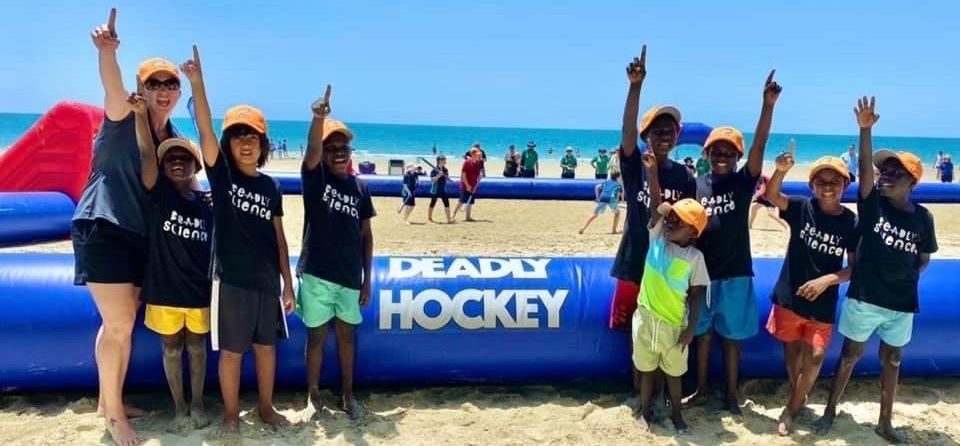
You’ve presented videos for our schools program, STELR. What you think is the best approach for STEM teaching in community, where English might be a kid’s third or fourth language?
Hands-on teaching, because concepts may not be broken down in language. We need to make sure they have access to the things they need. If we get kids in community to do science experiments, it’s much better to give them a kit where they can do something with their hands.
For kids at Robinson River, English is not their first language. But when they put those lab coats on, they flick a switch, and they are scientists. It takes away from the notion that you have to be a white, middle-aged male to wear a lab coat.
And when they put them on, they get a kick out of it and actually demand to do science. They love it. Language can be a barrier, but science can be an equaliser.
That school entered the Sleek Geeks prizes this year. They didn’t make it to the finals, but for me, that’s a huge win. How many Aboriginal and Torres Strait Islander community schools have entered the Eureka prizes? I can only think of one!
I want to remove the word “outreach” from our vocabulary. It says “I hold all the knowledge, and I’m dispersing it to them. I’m all mighty and powerful.” It’s not true at all. The gap is in resources and privilege, not knowledge or capacity.
These kids pick it up quicker than most kids. They have really good practical skills. They respect each other, probably more so than most kids in the city.
How does it make you feel to know you had a role in making that possible?
There are days where I’m hard on myself. I’m driven, and I will always be looking for the next big thing to try and educate our kids. Sometimes it’s like quicksand – you try to help, and you find out that there’s so much more to do.
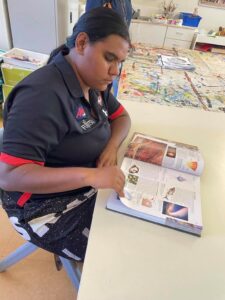
I’ve had a number of occasions where my Deadly Junior Scientists, who I knew really well, have passed away or got into trouble. That’s what we put ourselves through when we do this. You can’t help but personally affected by it, and it takes time to heal.
It’s a tough job. But I would not trade it for the world.
When I see these kids succeed, I’m so bloody proud of them. I’ve seen kids learn how to read. When you see a kid that you’ve worked with for four or five years turn into a little adult very quickly it’s an amazing experience.
I never thought, when I started this, that it would dramatically impact someone so much that their whole life is probably going to change from this point on.
What’s next for Deadly Science, and what’s next for you?
We’re doing a lot of STEM translations. We’re working with Primary Connections at the moment for Our World, Our Stem. We have just obtained deductible gift recipient status for Deadly Science, which is bloody exciting.
I’ve worked hard to make this into an organisation that is for everyone, not just Aboriginal people, and to connect others to our culture.
When people see these Deadly Scientists doing well and cheer them on our kids can feel 10 feet taller, because we don’t get enough praise in life. I’m really proud of that.
This thing will outgrow me and be here long after I’m dead, because these kids are inspired by Deadly Science. We’ve made science possible. And when you do that, anything is possible.
Interview by Ben Hickey
The article was originally published in IMPACT — The Australian Academy of Technological Sciences and Engineering’s (ATSE) bi-yearly magazine.
ATSE is Australia’s foremost impact network for leading applied scientists, technologists and engineers. We celebrate excellence in science, technology, engineering and mathematics (STEM) by appointing prestigious Fellows, awarding upcoming innovators and equipping the next generation with skills to build a better Australia and world. We are an authoritative and independent voice to government and our world-class STEM career programmes demonstrate how to tackle our most urgent challenges.

Years: R-12
Login or Sign up for FREE to download a copy of the full teacher resource
